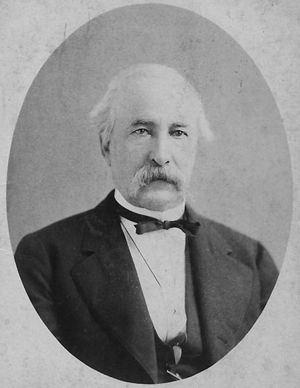
Naval History & Heritage Command photo NH 103529-KN.
VAdm Stephen C. Rowan.
Over the next eleven years, he served afloat in several ships and in March 1837, while attached to the U.S. Exploring Expedition, was promoted to the rank of lieutenant. During the later 1830s and early 1840s, Rowan was assigned to the U.S. Coast Survey, and subsequently was an officer of the ship-of-the-line Delaware in the South Atlantic and Mediterranean. In 1845–1848, he served in the sloop-of-war Cyane and played an active role in Mexican war operations in California, including leading the landing party that captured San Diego. While commanding the store ship Relief with the Brazil Squadron in 1855, he was promoted to the rank of commander.
During the opening several months of the Civil War, as commanding officer of the steam sloop Pawnee, Rowan attempted to relieve besieged Fort Sumter, South Carolina, towed endangered ships from the Norfolk Navy Yard, Virginia, operated against Confederate forces along the Potomac River and participated in the capture of Forts Hatteras and Clark, North Carolina. After commanding the larger sloop Brooklyn during the last months of 1861, he played a leading role in offensive operations on the North Carolina sounds. His combat achievements were recognized by simultaneous promotions to captain and commodore in July 1862, and by command of the big steamer Powhatan. From late 1862 until the fall of 1864, Rowan commanded the big ironclad New Ironsides during operations against Charleston, S.C., and briefly led U.S. naval forces in the North Carolina sounds.
Following the end of the war, Commodore Rowan commanded the cruiser Madawaska and, following promotion to rear admiral in July 1866, was Commandant of the Norfolk Navy Yard. Between August 1867 and November 1870, he led the U.S. Asiatic Squadron. As a Vice Admiral, Rowan was Commandant of the New York Navy Yard (1872–1876) and held a variety of important oversight positions and performed special duties. He spent his final decade as Governor of the Naval Asylum, Superintendant of the Naval Observatory and Chairman of the Lighthouse Board.
Retired from active service in April 1889, Vice Admiral Rowan died on 31 March 1890 at Washington, D.C.
Source: Naval History & Heritage Command including Dictionary of American Naval Fighting Ships.